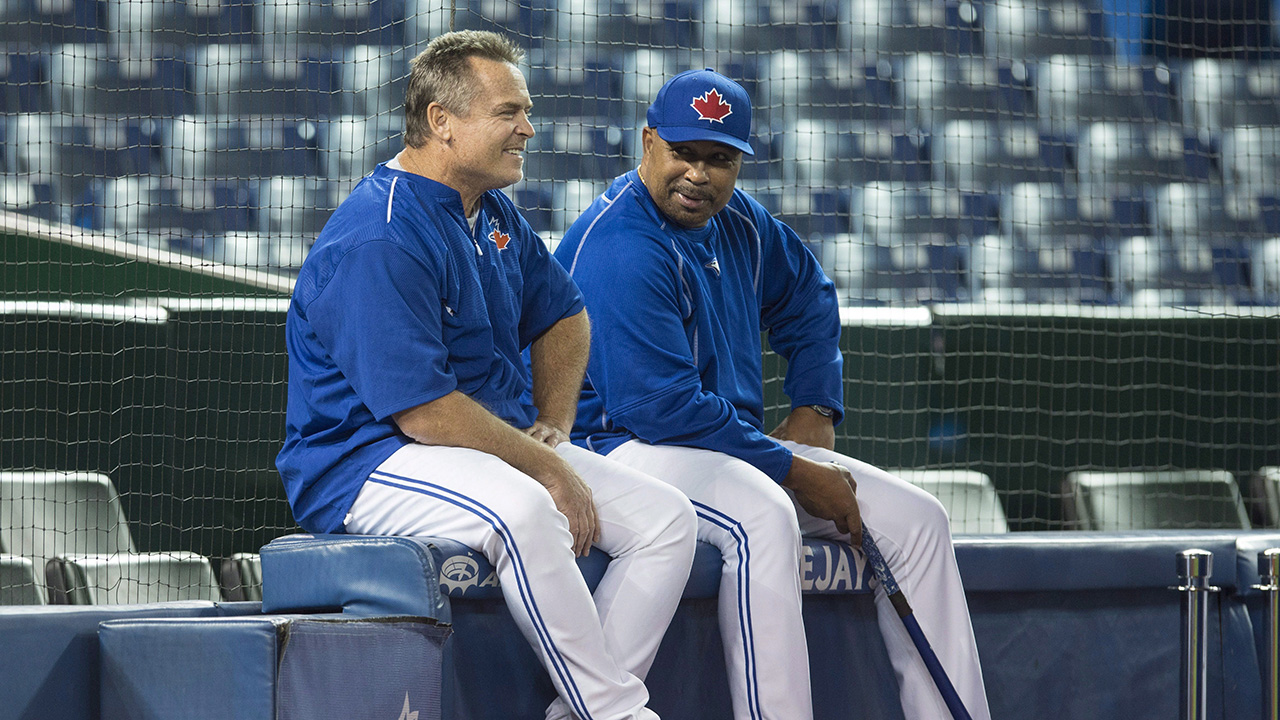TORONTO – The Toronto Blue Jays are expanding their protective netting around home plate at Rogers Centre by 150 per cent, running a camouflaged-coloured mesh from the outfield end of one dugout to the other, the club announced Monday.
The screen behind home plate will rise from the previous 18 feet to 28 feet above the playing surface, while the netting over the dugouts, positioned on the edge of the roofs closest to the field, will stand 26 feet above the turf.
Between the elimination of the knotted netting and the switch to a camo colour designed to blend into the field’s green, the Blue Jays are hoping to minimize the intrusiveness of the new barrier.
The expansion comes after a young girl at Yankee Stadium suffered facial fractures and bleeding on the brain after being struck by a 105-m.p.h. rocket off the bat of Todd Frazier last September, underlining the potential risks in the seats closest to the field.
The Yankees last week announced plans to extend their protective netting well down the lines, covering the seats most vulnerable to line drives.
Days before the incident in New York, a fan in Toronto was fortunate to escape with only a welt to his abdomen when a Marcus Stroman sinker sheared off Salvador Perez’s bat at the handle, sending the barrel hurtling a couple dozen rows into the seats on the third-base side of the field.
Since them, the Blue Jays received some emails from fans asking about their plans for expanded netting, but not a high volume of feedback seeking change.
Rogers Centre had been in compliance with Major League Baseball recommendations even before they were updated in December 2015, with fans in the field-level seats between the near ends of both dugouts protected by netting. Unlike some other ballparks, the adjacent seats start well beyond the suggested 70 feet beyond home plate.
Still, with velocity rising around the game – and by extension, exit speed of balls off the bat – fans have less time to react. Factor in the potential for flying bat shards with jagged ends and the increased use of mobile phones or other distracting screens by fans in the stands, and there is good reason for clubs to adapt their standards.
At some stadiums in Japan, protective netting runs foul pole to foul pole, and there’s a reasonable debate to be had as to whether that’s prudence or overkill. Tied in are questions as to whether too much netting detracts from the fan experience and to what degree of danger do fans agree to take on when they step into a ballpark.
Tickets carry a disclaimer that the bearer “assumes all risk and danger incidental to the game,” something that’s helped protect teams in court. In-stadium announcements also warn fans about the need to pay attention.
The NHL mandated the use of protective mesh above the glass behind the nets at both ends of the rink for the 2002-03 season, after 13-year-old Brittanie Cecil was struck by a deflected shot at a Columbus Blue Jackets game March 16, 2002, and died two days later.
Establishing a uniform policy in baseball is impossible because unlike NHL arenas each ballpark has very different dimensions.
[relatedlinks]









